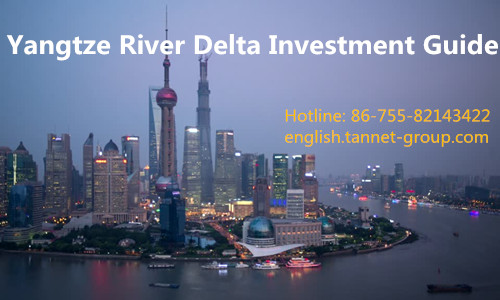Yangtze River Delta or Yangtze River Delta Economic Zone is an economic region in China that encompasses Shanghai municipality, Jiangsu, Anhui and Zhejiang province. The Yangtze River Delta (YRD) economic zone refers to 28 cities in Shanghai, southern Jiangsu, eastern and southern Anhui, eastern and northern Zhejiang.
Geographical Location
The Yangtze River Delta, Yangtze Delta or YRD, also called Yangzi Jiang Delta, Changjiang Delta, River Chang Delta, Lake Tai Region or the Golden Triangle of the Yangtze, generally comprises the triangle-shaped territory of Wu-speaking Shanghai, southern Jiangsu province and northern Zhejiang province of China. The area lies at the heart of the region traditionally called Jiangnan (literally, "south of the Yangtze River"). The Yangtze River drains into the East China Sea. The urban build-up in the area has given rise to what may be the largest concentration of adjacent metropolitan areas in the world.
Economy Overview
The Yangtze River Delta Economic Zone is dominated by Shanghai which is mainland China's financial center, as well as by other important economic hubs like the cities of Nanjing, Suzhou, Hangzhou, Ningbo and Xuzhou.The vast interior of the Yangtze River Delta is heavily industrialized with advanced transport infrastructure such as highways, expressways, airports and ports.
The region already accounts for RMB4.66 trillion yuan (682.21 billion U.S. dollars) in 2007, up 15.2 percent year on year. Its forecasted GDP in the delta would hit 15.95 trillion yuan by 2020, based on the annual growth rate of 11 percent.
Shanghai predominates in the finance, banking, property, automobiles and logistics industries. Suzhou is a strong manufacturing base for foreign companies. Nanjing is a hub for the automobile industry, electronics, education, energy, iron and steel industries. Ningbo is a growing economic port which provides import and export routes for neighboring provincial cities.

Transportation & Communications
The transport infrastructure in the YRD Economic Zone is highly developed. The region served as the vast industrial and economic hinterland for Ningbo and Shanghai which is the biggest seaport on mainland China.
(1) Air. The economic area is serviced mainly through the airports in Shanghai, Nanjing, Hangzhou and Ningbo. There are plans for Suzhou to have an airport.
(2) Railway. The Chinese government plans to build five major railways in the Yangtze River Delta economic zone. This includes three inter-city railways, namely, Shanghai-Nanjing railway, Nanjing-Hangzhou railway and Shanghai-Hangzhou railway. The other two railways are the Shanghai-Nantong Railway, and the Ningbo-Taizhou-Wenzhou railway.
(3) Sea. The waterways in the YRD are the most important in eastern China. Two of the busiest ports in China are located in this region. They are the Port of Shanghai and Port of Ningbo. The Port of Shanghai is the world's busiest port in 2007, handling over 492.3 million tons of container freight. The Port of Ningbo is the fourth busiest with 473.4 million tons of container freight handled in 2007. The main ports that operate in the Yangzte River Economic Zone include the Port of Shanghai, Port of Ningbo and Port of Nanjing.
Commercial & Trade Logistics
The “new-style” urbanisation process in the YRD region has focussed both on urban development projects and on building up inter-city infrastructure. Inter-city and regional transportation networks, in particular, have been optimised to facilitate the formation of efficient, seamless logistics systems, while promoting the co-ordinated development of cities and towns of varying sizes. The continuous expansion of railway, highway and waterway infrastructure has effectively linked the transportation and logistics networks of new development zones and new towns with those of the major cities in the YRD. This has helped these new areas to integrate with the local city clusters, as well as the whole YRD economy.
Against this background - and coupled with the continuous growth of industrial and commercial activities in the region - the demand for logistics services has inevitably increased. The logistics and transportation activities of Jiangsu and Zhejiang provinces have been growing steadily in recent years. Since 2005, the freight volume of the two provinces has nearly doubled, with immense growth in highway freight, which accounted for some 57% of the total freight volume of the two provinces in 2013.
Contact Us
If you have further inquires, please do not hesitate to contact Tannet at anytime, anywhere by simply visiting Tannet’s website english.tannet-group.com, or calling Hong Kong hotline at 852-27826888 or China hotline at 86-755-82143422, or emailing to tannet-solution@hotmail.com. You are also welcome to visit our office situated in 16/F, Taiyangdao Bldg 2020, Dongmen Rd South, Luohu, Shenzhen, China.
Previous:Ningbo Corporate Formation
Next:Suzhou Hi-tech District Introduction